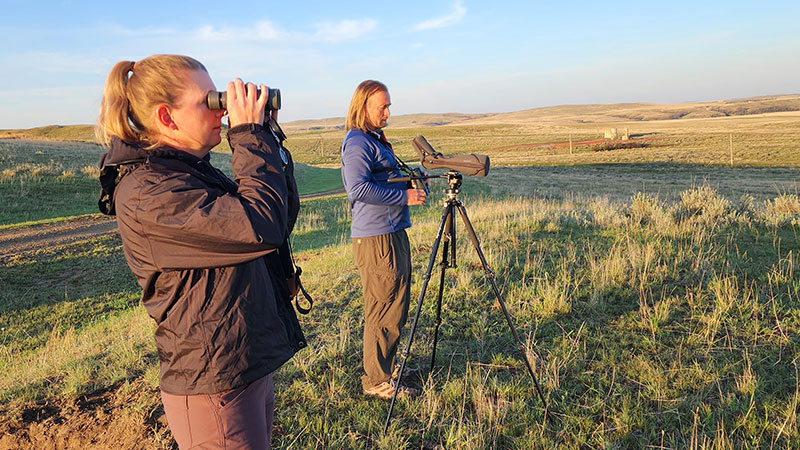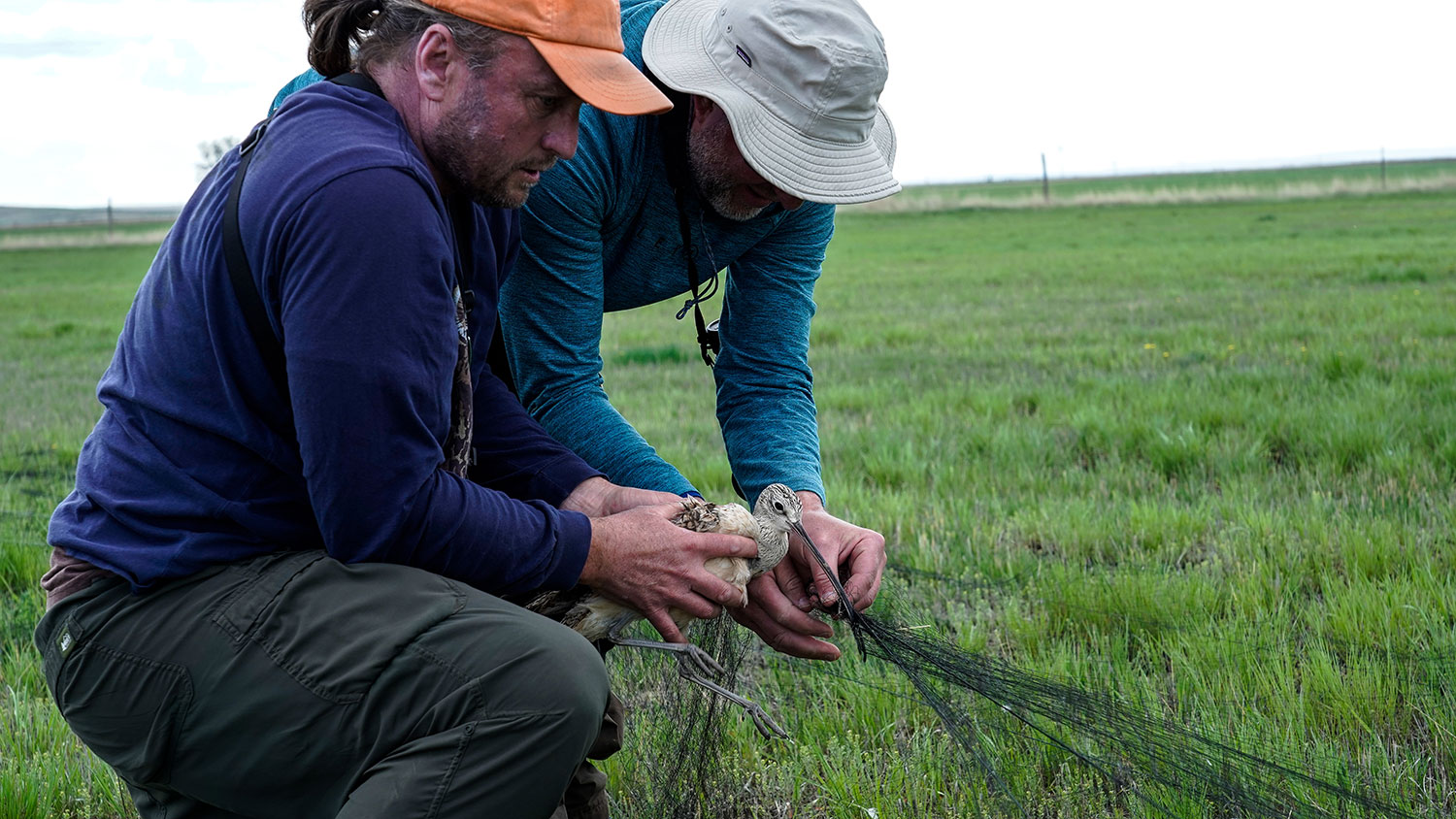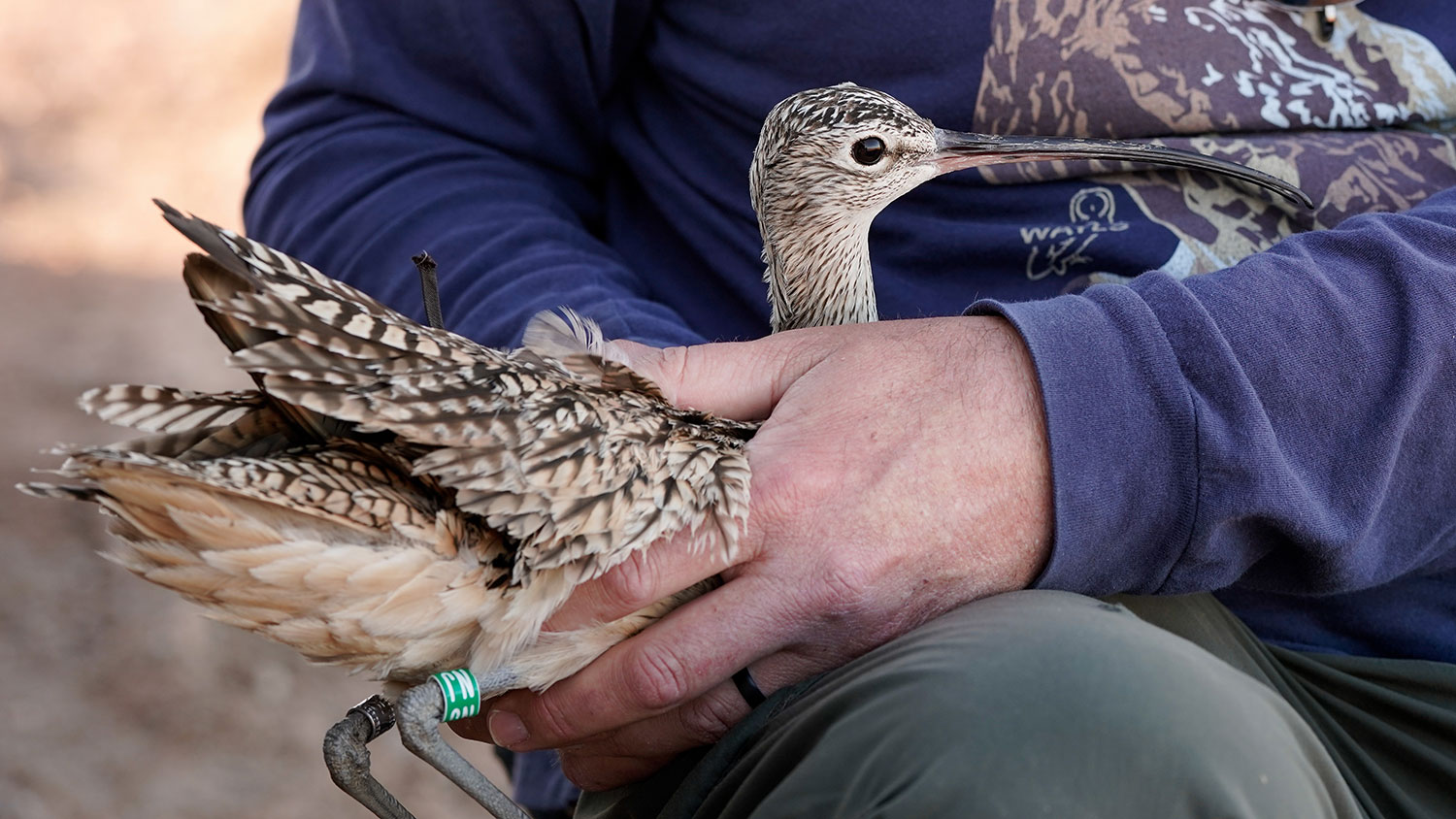Answering Curlew Questions
Ron Wilson

It’s interesting. No, scratch that. It’s amazing that male and female long-billed curlew pairs that wintered months and miles apart in places like Texas and Mexico, rendezvoused in southwestern North Dakota to nest and raise young, in some instances in the same darn field, just like they did last year.
We know this because researchers from Boise State University’s Intermountain Bird Observatory and Northern Great Plains Program of American Bird Conservancy captured and fit GPS and satellite transmitters on five birds in 2022 to better understand the habitat use of this large shorebird in southwestern North Dakota and elsewhere.
From the time the curlews were fitted with tracking devices in the North Dakota Game and Fish Department funded research program, researchers were provided updates on the whereabouts of the birds on their computers daily, or in some instances, every few hours.
“Of the North Dakota birds, three migrated to the Laguna Madre ecosystem down to the border between Texas and Mexico. One went offline pretty quickly, so we think it was a transmitter failure issue,” said Jay Carlisle, research director with Intermountain Bird Observatory. “But two wintered either side of the border in Texas and Mexico, and then two others went to the interior of Mexico and Durango, and they stayed for a while and then they both moved to other areas. One went to the west coast of Mexico, and one went further south in interior Mexico.”
Researchers gathered in southwestern North Dakota again earlier this spring to deploy transmitters on anywhere from four to seven more curlews to add more feathered bodies to the study.
Sandra Johnson, Game and Fish Department conservation biologist, said the Department’s role is to provide funding for the project.
“That funding is from the nongame fund, the Watchable Wildlife Tax Checkoff Fund,” she said. “So, the project is really funded by those people who donate to that account.”
Long-billed curlews are on North Dakota’s Species of Conservation Priority list as their population has declined in the state over time.

“The information we’re getting from the birds with transmitters is important for managing the species now, but even into the future so that we can keep monitoring the population, tracking how they’re doing over time,” Johnson said. “Maybe curlew range will increase with some of these great opportunities out there for landowners working with these partners to do things on their land that increases the health of the grasslands while keeping ranching on the landscape. That’s really important to these birds and North Dakota.”
Researchers are not only interested in where the birds spend winter, but also important migration routes and potential stopover areas. The curlews fitted with transmitters in 2022 showed that they stopped in Kansas and other states on the southern Great Plains between North Dakota and Texas.
“It was really interesting how one curlew in particular just really hung out kind of in the city limits in a city in Texas and was going to different parks and soccer fields. And then you’ve got another curlew that just went right to the beach, the ocean, and stayed there all winter long,” Johnson said. “But then on the way back to North Dakota in spring, it was interesting how most of them stopped in Kansas. That was interesting to see because that wasn’t a place that they stopped on the way south, but that was a really important place for them coming back to the breeding grounds to get ready for the nesting season up here.”
“It’s great working with a lot of North Dakota landowners because they are proud stewards of the land and interested and curious about what they have on their land and what the birds might be doing on their land and even when they leave,” Ellison said. “If you think about it, the curlews are only here for maybe two or three months, but we still think of them as our birds, even when they’re down somewhere south for most of the year.

Curlew Wanderings
Some examples of the comings and goings of long-billed curlews captured and fitted with GPS and satellite transmitters in North Dakota in 2022.
Male 6A – Left North Dakota on July 4, 2022, stopped in Nebraska from July 5-7, then flew directly to Laguna Madre, Mexico and hung out at a hypersaline coastal lagoon from July 9, 2022 to March 27, 2023. He left March 28, 2023, and made a spring stopover south of Garden City, Kan., from March 31 to April 16. On April 17, he arrived back at the field in North Dakota where he was tagged.
Female 6J – Left North Dakota on July 5, 2022, flew over the Black Hills, took a brief rest in western Nebraska and then in southwest Texas from July 7 to July 12. On July 12, she left Texas and flew to the Laguna Santiaguillo in Durango, Mexico, a significant wetland ecosystem that provides wintering habitat for large numbers of waterbirds. She stayed until November 3 and then went southwest to near the Pacific Coast near Mazatlan. On April 3, 2023, she headed north and made a spring stopover southwest of Lubbock, Texas until April 11. That evening, she made a direct flight to North Dakota and arrived 24 hours later in the field where she was tagged.
Female 6H – Left North Dakota on June 14, 2022. Except for a 15-hour stopover in central Kansas and a couple other short breaks, she flew almost 1,500 miles nonstop until June 19 when she arrived at Laguna Atascosa National Wildlife Refuge near the Texas coast, but the transmitter may have failed because researchers have not heard from her since.


